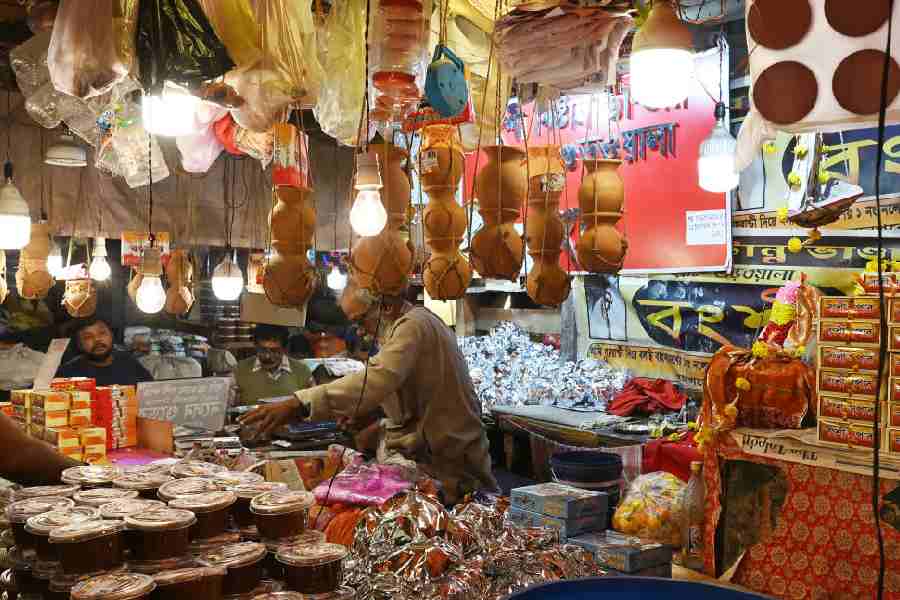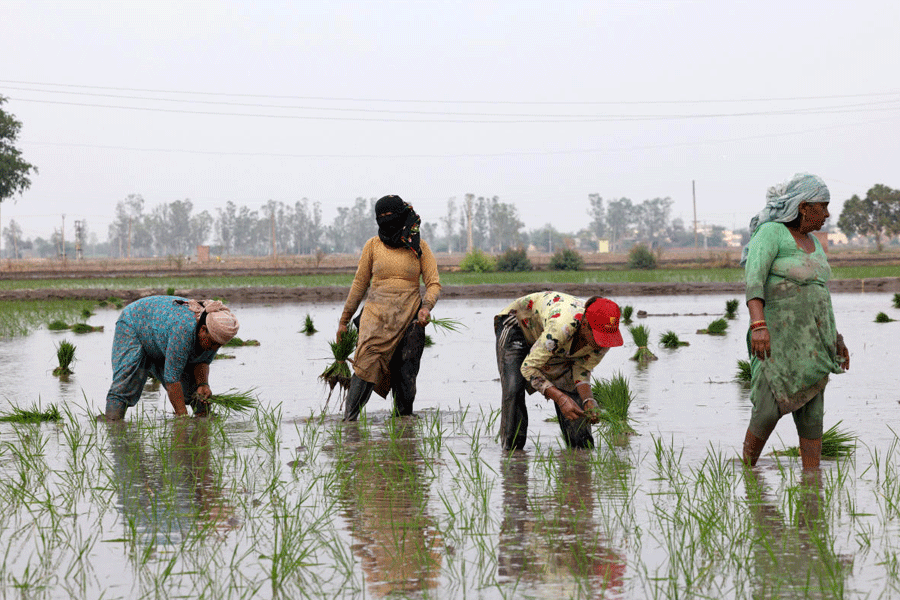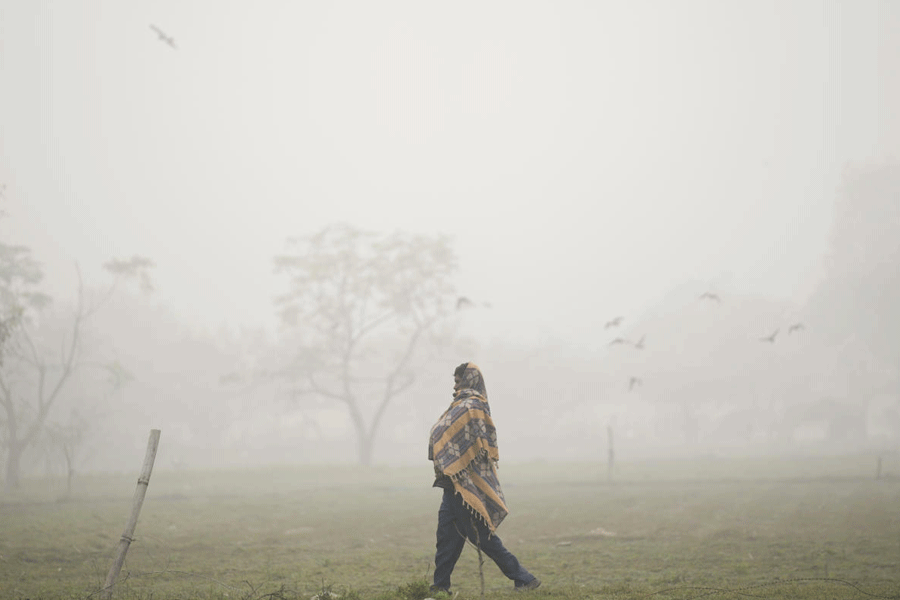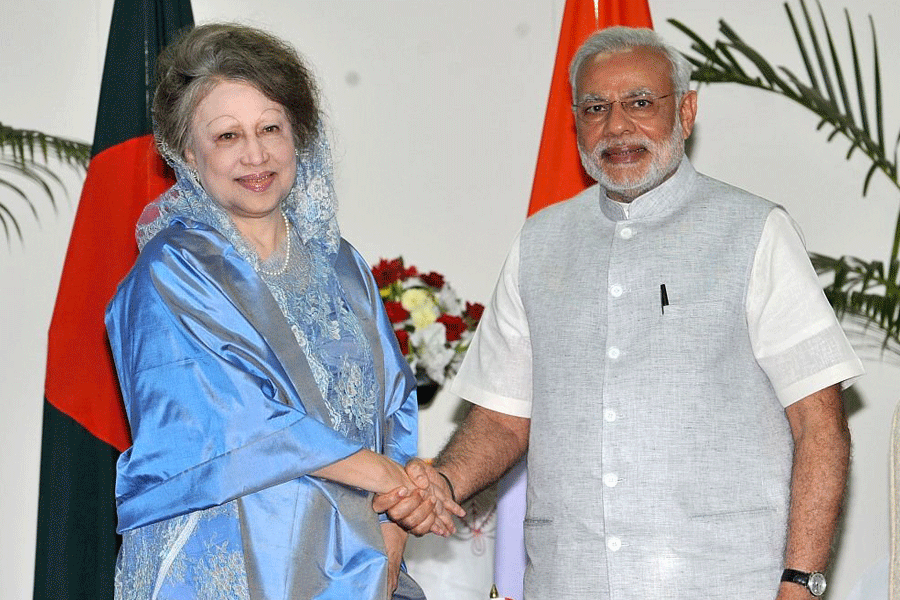Sealdah never goes to sleep. At 7 in the morning during peak winter, Baithakkhana Bazar — the wholesale market in Sealdah — too is already afloat in the humdrum rhythm of a week day. Chewing on tobacco, vendors shout each other’s names. It works like an alert system as they shove their loaded carts into the market’s alleys.
More men, pumped on the market’s bustling energy, carry heavy loads on their heads and walk in and out of shops. If you take a walk in the market at this time
of the year, a sweet, earthy fragrance will lure you into its quietest alley, where the gur or jaggery sellers peddle their wares.
There are about 50 shops in the gur market, all selling a variety of jaggery. Most of it is made from date palm. Warm lights, muted chatter — it feels like a world apart from the rest of Baithakkhana Bazar. Patali gur, ranging from coin-sized pieces to saucer-shaped chunks, are on display in the shop fronts. The liquid nolen gur in earthen pots, jars and
tin containers are stacked in odd corners.
It is hard to take your eyes off the lot. But when you do, you might notice wooden ladders tucked into almost every other shop corner; each leading up to the workers’ makeshift sleeping quarters just above the shops. With business rolling through the day, it seems there is no designated bedtime.
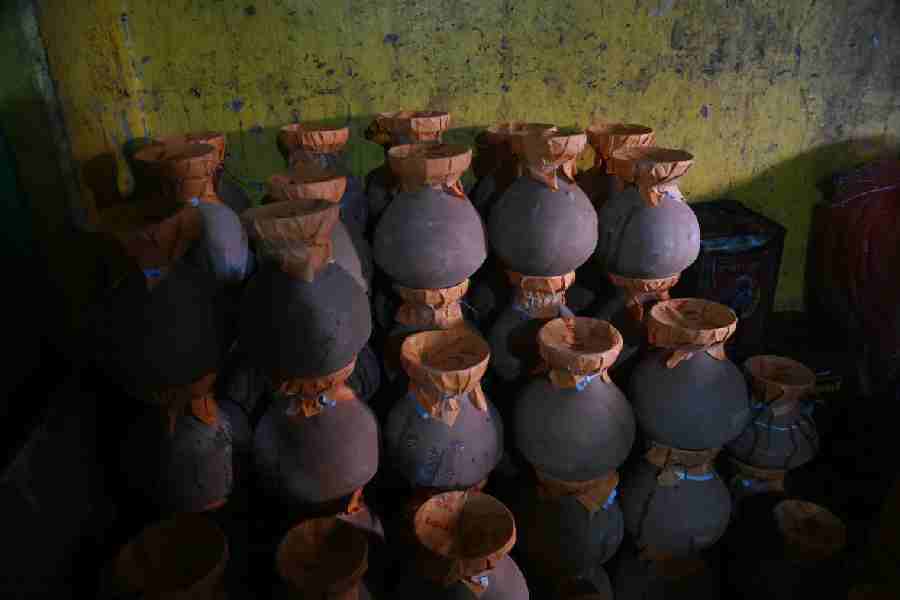
Sobhabajar Gurpatti, Kolkata on Monday morning. (20.01.2025) The Telegraph picture by Bishwarup Dutta
Even at 7am, you will find some men catching up on their sleep. For all you know, they have worked all night, loading supplies. One or two shopkeepers, still wrapped in blankets, peek down from their sleeping quarters, ready to slither down at the slightest sign of an approaching customer. In the innermost corner of the gur market, a man fries kachori — a breakfast shop that mostly serves the gur sellers.
Bashudeb Pramanik is one of the shopkeepers at the market. Dressed in a woollen cap and a grey shawl, he sits at his shop; his eyes are barely open. He says, “We open shop at 4.30am. Supplies come at midnight, at 3am, then again at 9am, noon and sometimes later.” In the countdown to Makar Sankranti, the Hindu festival which is celebrated with homemade sweets made from gur, they sell out their stock daily.
Says Pramanik, “I come from Midnapore. I shall go home after a month or so.” When business is good, going home would mean missing out on a good number of regular customers.
The gur patti in Baithakkhana Bazar might be a wholesale market but gur connoisseurs also frequent the place. Ranjit Roy’s shop is slightly bigger than the standard shops
here and certainly better lit. Roy cannot stop talking about the authenticity of
his gur and keeps pouring out nolen gur into tiny plastic cups to potential customers.
As the gur slides down the throat, its sweet taste nearly burns a hole in the stomach. And the sweetness lingers on the tongue, long after the morning sun has set off on its course.
A man in his 50s, wearing thick black spectacles, empty bag in hand, is trying out different varieties of gur. The patali he finally picks is priced at ₹120 per kilogram. Says the customer, “Is it authentic? I have never seen your video on YouTube.”
Roy, who has been gushing about his gur nonstop, is stunned into silence. His eyebrows climb into his face and his face becomes a little red. When he finally finds his voice, it is a tirade. “You all go by YouTube. Do you know how old my shop is?”
Through December and early January, gur stalls pop up in various corners of the local bazaars, as an extension to fruit and vegetable stalls.
Mithun Kundu is one such stall owner. He buys large tins of nolen gur from Ranjit Roy’s shop, almost daily. He sells them at the Belgharia bazar, alongside his fruit shop.
Sovabazar’s gur patti is another place that retails gur in Calcutta. As the name suggests, gur patti is a two-storeyed warehouse where gur merchants store gur and distribute it to other parts of the country. There was a time when multiple gur warehouses and shops had sprung up in the gur patti area in Sovabazar. Now, only three warehouses are in the business.
On the day of Makar Sankranti, the gur patti is relatively empty. The workers and the gur farmers are on leave, enjoying the fruits of their labour with their families.
Amol Kumar Ghosh, who is inside his storehouse Shree Joyshree Stores, finally finds a moment to catch his breath and take stock of his gur. This winter, he is only dealing in nolen gur. When it comes to nolen, not all that is sweet, sugary and golden brown is the real thing. Says Ghosh, “Nolen gur is rare. After a farmer makes a cut in the date palm and collects the sap, he has to let it rest for three to five days at least. Even the gur that he makes would not be in large quantity.”
Pretty much all gur sellers promise this: “Come after Makar Sankranti, demand will be less so the quality of gur will be better.”
According to Tanmoy Bera, their storehouse, Sreemanta Gurer Arat, is over 200 years old. He claims that he sells 60-70 peti of patali gur, 5,000-6,000 kolshis of nolen gur and at least 1,000 tins of dana gur every day. A peti refers to a big bundle of patali gur. These are sourced from various districts of West Bengal. In Majhdia village of Nadia, there is a haat on Wednesdays and Sundays. Farmers from neighbouring villages sell their gur here. That gur makes its way to the storehouses in Calcutta. Other than that, Simlapal village in Bankura, Jalangi in Murshidabad, Jaynagar in South 24-Parganas, Gede in Nadia near the Bangladesh border supply them gur.
“Our gur goes to all the renowned sweet shops,” says Bera. He lists sweetshops from Calcutta, Bangalore, Mumbai, Hyderabad and Bhubaneswar that stock up on their gur from him.
Bera recalls a time when gur came to Sovabazar and was shipped out through the Ganga to various cities. “Things have changed,” says Bera pointing at the series of Chhota Hathi trucks lined up in front of the gur patti.
Subhash Dey, who runs a dashakarma bhandar inside the Sovabazar market, holds up a large chunk of patali gur and makes his customers catch a whiff of its aroma. Its heart is a burnt sienna, its aroma tempting. Dey says, “I don’t even want to sell it, I just want people to appreciate the beauty of it.”

